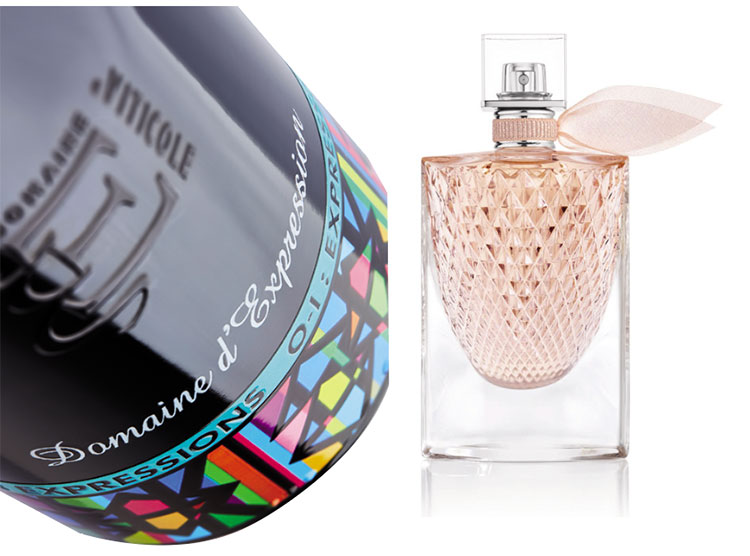Glass packaging – Data 2018
Market data and development prospects for primary packaging glass. Strengths: transparency and naturalness.

The glass packaging sector can be divided into hollow glass and tubular glass. Hollow glass includes bottles, jars and flacons; tubular glass can be divided into vials and flacons.
Subject to strong competition from other types of packaging, plastic and paper packaging are still confirmed today as the main competitors of glass, depending, of course, on the sectors of use.
Referring to the official publication of the Italian Packaging Institute, in this analysis we examine the glass intended for the primary packaging of liquid, semi-liquid or powdery products.
Trends and markets of use
The food (food & beverage), cosmetics and pharmaceutical sectors have al-ways been the areas where the consumption of glass packaging reaches significant numbers.
Given that this is packaging strongly linked to the sectors of use, its trend has always been influenced by the trend of the products to be packaged.
Take for example wine, almost exclusively the prerogative of glass: in the event of more or less significant variations in the product balance, there may be significant differences in the production of bottles.
After years of losing position in the various packaging mixes, lately glass is experiencing an upsurge: this type of packaging (on the market for a long time compared to other packaging) has always been associated with ele-gance, transparency and sustainability, so much so as to be re-proposed as a useful alternative in the marketing and communication strategies adopted by some goods producers.
In this regard we cite Coca-Cola, which is re-evaluating the classic and be-loved glass bottle. Testimonials in this sense also come from the wine sec-tor, where even the less valuable brands are focused on the glass bottle at the expense of predominantly paper laminate packaging.
The same goes for milk, despite the continuous decline in consumption by Italian families, some glass bottles have now returned to the supermarket shelves.
Glass packaging remains the premium packaging for cosmetics, a symbol of elegance and high range, both for perfumes (where it has exclusive rights) and for creams.
Sector data
In 2018 the production of glass packaging expressed in tons settled at around 4,167 t/000 (+2.9% compared to the previous year).
The performance of all the components of the sector balance sheet was positive: exports grew at a rate of 6.7%, consumption stands at +4.6%, ex-ceeding 4,400 t/000.
Imports grew by 17%, confirming a negative trade balance for Italy, which translates into an apparent consumption of glass packaging which is higher than domestic production (the figure concerns both bottles and jars).
Production expressed in terms of turnover grew by 3.5%.
The numbers of the various types
Bottles. Bottle production accounts for 88% of empty glass packaging and in 2018 showed a growth of 3.1%.
The trend in production is influenced by exports, which in 2018 grew by 9.4% compared to 2017, and the domestic market by +5.2%. Imports are growing to double figures, registering +23%.
Demand from the sectors of use undoubtedly influences the positive pro-duction trend, which in 2018 showed a good growth trend: production in fact stands at +4.2%, with different trends depending on the product exam-ined.
Considering overall “alcoholic beverages” - which accounts for over 70% of glass bottle user sectors - growth in 2018 stood at +4%.
The non-alcoholic beverages area, including milk, accounts for 15.5% of the sector and put in a growth of 2.7%; the remaining 14.5% is divided be-tween condiments, sauces and tomato derivates which, as a whole, grew by around 6%.
In 2018, over 5,200 t/000 of glass bottles were used, of which 73% dispos-able, 27% returnable bottles.
37.8% of glass bottles (disposable + returnable) used in Italy were destined for wine and sparkling wines, 29.3% for mineral water.
13.1% of the bottles were destined for beer, while the remaining 19.8% were divided into other beverages (alcoholic and non-alcoholic) 10.4%, and water and tomato derivates (purees) at 9,4%.

Jars. In 2018, the production of glass jars (7% of the total production of empty glass packaging) registered a growth trend of 1.1%, influenced ex-clusively by the domestic market which grew at a rate of 1.9% .
Exports are down (-8%) while imports grew by 1.7%.
The main area of use of the jars is that of food preserves (including fish products) with a share of 56%; the remaining 44% is divided into sauces, baby food, jams, yogurt and fresh desserts, spices and more.
In 2018 approximately 519 t/000 of glass jars were used in Italy, of which 25.7% were destined for the oil/vinegar sector and 15.1% for legumes. Other user sectors are: homogenized products (15.6%), various sauces, both tomato based and not (12.7%), fish products such as tuna, anchovies and sardines (5%). The remaining 25.9% of glass jars are divided into fruit in syrup, olives, corn, spices, jams, cream spreads, yogurt and more.

Flacons. The production of hollow glass flacons also shows growth (+3.5), 58% of which used in cosmetics and 33% in the pharmaceutical sector (the remaining 8% is destined for other uses).
This type of packaging accounts for 4% of the glass packaging total. Tubular glass products (flacons and vials) comprise the remaining 1% of glass pack-aging and are used for 85% in the pharmaceutical sector with the remaining 15% is divided between cosmetics and other uses.
The area registered a +1.3% in production, only driven by exports, which grew by 9%. Both imports (-4%) and the domestic market (-8%) were down.
Looking at glass packaging in its entirety, growth prospects remain strongly linked to the marketing and communication choices made by the big brands in favor of this type of packaging.
Barbara Iascone
Istituto Italiano Imballaggio



















